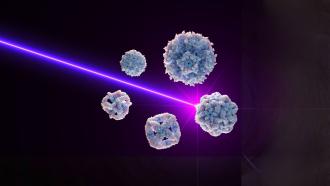Detecting ammonia is important in many industrial and biomedical applications. A team of researchers from the Indian Institute of Science, Bangalore have synthesized ammonia sensors from filter coffee, the favourite beverage of the city.
Hari Krishna Sadhanala, Ravi Nandan, and Prof. Karuna Kar Nanda from Materials Research Centre, IISc, have reported the synthesis of nanoparticles using filter coffee powder as the starting material. Nanoparticles have a very large surface area for a given volume to capture on their surface, gases in the vicinity. They can be deposited on a substrate like glass, plastic or paper to make the sensors.
“The benefits of this method are several: low cost of processing, low power consumption, wide range of sensing, and possible miniaturisation of the device,” says Sadhanala.
Many nanomaterials like single walled carbon nanotubes, graphene, and graphene oxides are capable of gas detection. However, their operating temperatures are much higher than room temperature, and they must be heated or irradiated to recover the captured gases before the sensor is re-used. The carbon nanoparticles (CNPs) developed in this study operate at room temperature and do not require external stimuli to operate or to recover the initial state. Thus cost of operation is reduced considerably when compared to the devices which need an external stimulus. As a result, the miniaturization of the device is also possible.
When a gas-sensing material captures a gas on its surface, its electrical resistivity - the property of the material to obstruct current flow - undergoes a marked change. This results in the change of current passed that can be measured. To increase the sensitivity and ease of capture towards ammonia, an impurity of nitrogen atoms is ‘doped’ into the CNPs. In the case of ammonia, oxygen from the surroundings gets adsorbed on the material first; as a result, electric current reduces since electrons are attracted to oxygen atoms. When ammonia is present, it displaces oxygen and makes it easy for electrons to flow. Thus the rise in current is the signature of presence of ammonia. The material’s sensitivity to other gases is not significant, so false-positives do not occur.
The nitrogen-doped carbon nanoparticles (N-CNPs) synthesised in this study can detect ammonia over a the entire range of concentrations that occur in practice (one in thousand to one in ten billion), and their sensitivity increases as proportion of nitrogen increases. They are synthesised from coffee powder as caffeine contains carbon and nitrogen atoms, and is readily available.

























